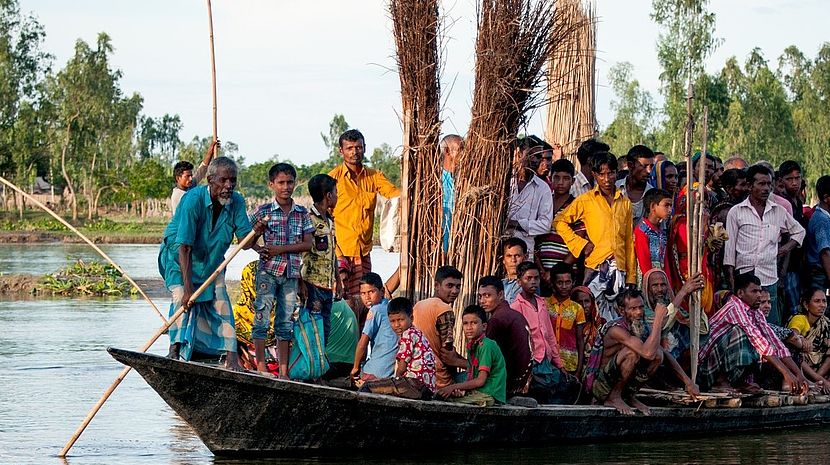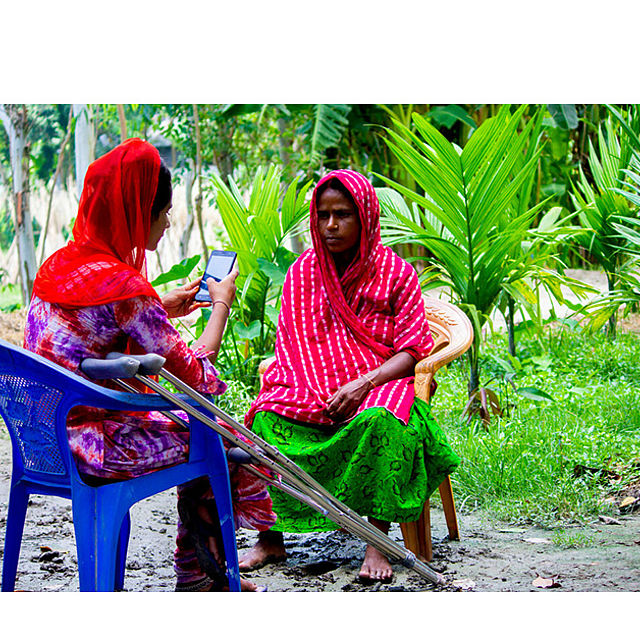Crisis Modifier:
A Flexible Solution to Disability Inclusive Disaster Risk Reduction

In August 2017, South Asian monsoon rains caused particularly severe flooding across much of the region. In Bangladesh, Gaibandha district, CBM and its partner Centre for Disability in Development (CDD) supported the affected population, including persons with disabilities, with unconditional grants and relief items.
CBM activates the Crisis Modifier for the first time, reaching more persons in need affected by flooding.
In May 2022, heavy rains began in the northeastern region of Bangladesh. Initially, this was predicted to be an early arrival of the monsoon, as reported by the Flood Forecasting and Warning Centre, but quickly, the cumulative rainfall surpassed the 122-year record, resulting in tremendous flooding. The flooding affected the lives and livelihoods of a total of 7.2 million people in nine districts in northern Bangladesh. To support the government with relief activities for the flood-affected people, local/national non-governmental organisations, International NGOs, UN agencies, and the Bangladesh Red Crescent launched a humanitarian response to the affected community.

CBM activates the Crisis Modifier
As part of the expansion of its Disability Inclusive Disaster Risk Reduction (DiDRR) initiatives, CBM piloted a standard crisis modifier tool in 2021, accompanied by training for staff from CBM Country Offices.
Get it here
What is a Crisis Modifier?
A crisis modifier is a tool that enables early action and rapid response to humanitarian needs occurring in project areas. It is primarily intended for smaller humanitarian situations but can of course also be used as a starting point for a more comprehensive response. A crisis modifier is crucial when it comes to using existing funds for development projects by reallocating smaller activities during a disaster. In this respect, a crisis modifier contributes to the internal humanitarian funding mechanism as part of a disaster risk reduction intervention and a long-term, development-oriented project.
The aim of a Crisis Modifier is to address the immediate needs of the affected population by enabling implementing partners to act immediately while protecting the gains resulting from development programmes.
CBM has documented the deployment of crisis modifier during the Bangladesh floods in 2022 to provide valuable lessons for planning and implementing future crisis modifier activations.
Key Learnings:
- In Bangladesh, CBM did not have the possibility for the systematic preparation of a crisis modifier, and the concept was developed ad hoc. The quick decision-making process and positive results of the implementation show that the crisis modifier concept can also work ad hoc without systematic and long-term planning.
- The ad hoc development of the crisis modifier was also strongly supported by the fact that local partners could build on the existing structures in the affected communities. The crisis modifier would not have worked smoothly if the region's project had only started recently.
- It is essential to avoid overcomplexity and to ensure that activities are adjusted to the available budget: The workload and resources invested in the assessment, targeting and monitoring must be in a good balance with the concrete support provided to the project participants.
- It is essential to develop a realistic implementation plan that considers the realities in the affected regions and organizational capacities at the time given. Initially, two months were planned for the crisis modifier in Bangladesh, but, in the end, it took around three months upon completion of the PDM.